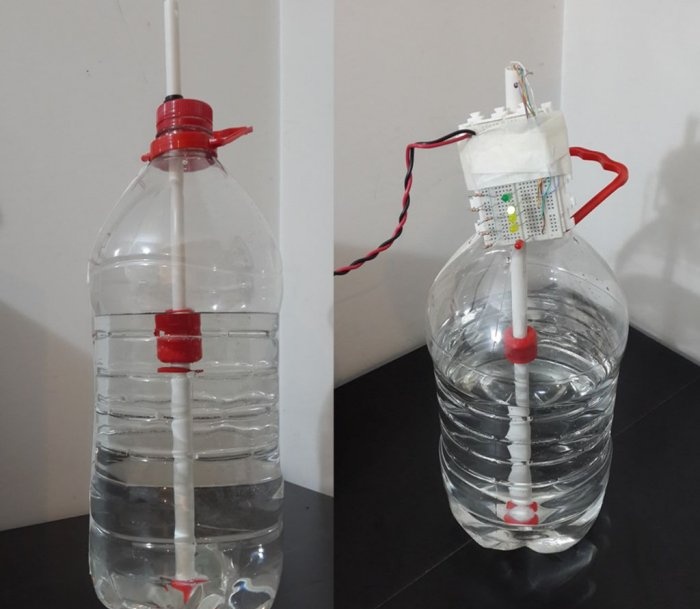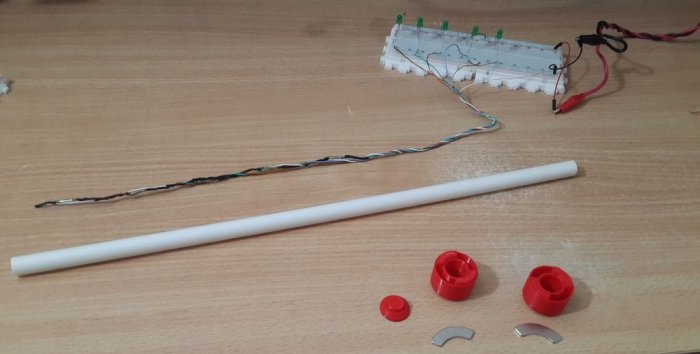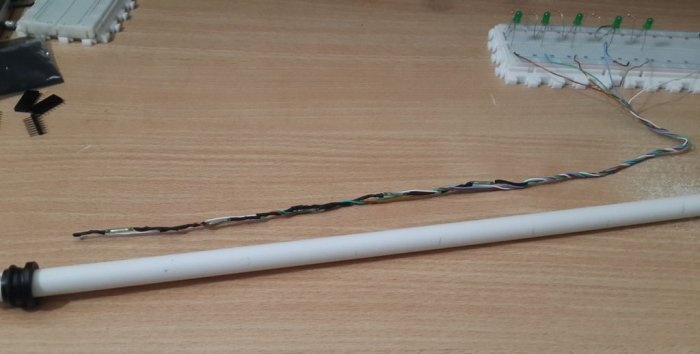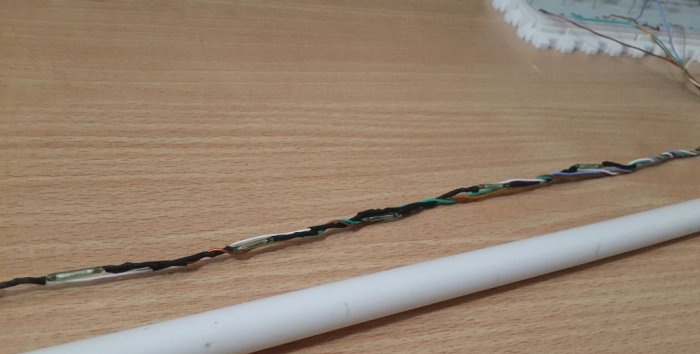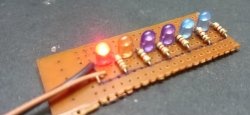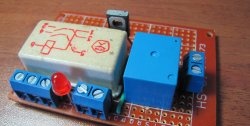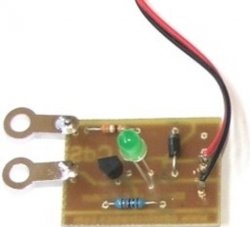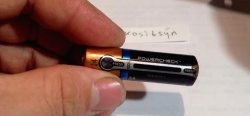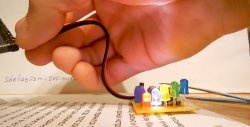Water level indicator on reed switches
A simple design for determining the amount of liquid in any container. Its huge advantage is that it can be scaled to fit absolutely any size and vessel without any problems. For example, you have a rainwater tank and you want to constantly monitor the water level in it. Nothing could be simpler. With this simple reed switch level indicator you can easily implement this control system.
Needed for the indicator
To make a five-level indicator, you will need: five reed switches operating for closure, five LEDs, 5 resistors at 330 Ohms. Wires, power supply, breadboard.
You will also need a couple of magnets (from an old hard drive). The tube and float were printed on a 3D printer, but no one forbids you to take a tube from polypropylene or PVC, and the float can be glued together from something.
Level indicator circuit
A simple circuit consists of five individual cells connected to a common power rail. Its reed switch turns on its Light-emitting diode.
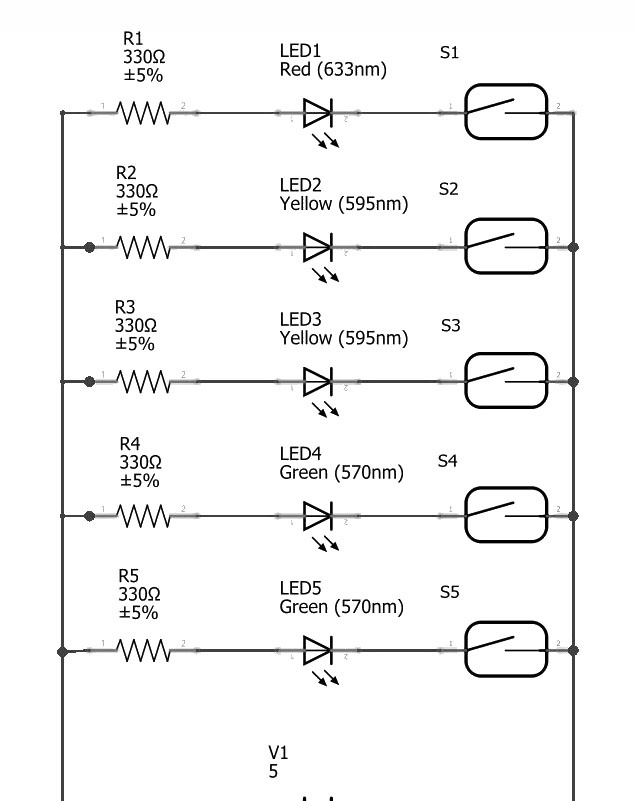
The idea behind the water level indicator is that there are reed switches located along the entire length of the tube. This design is immersed in a container of water.A float with magnets runs along the tube. And at what level it floats, those reed switches close. Closed reed switches include LEDs and the information is displayed on the LED bar.
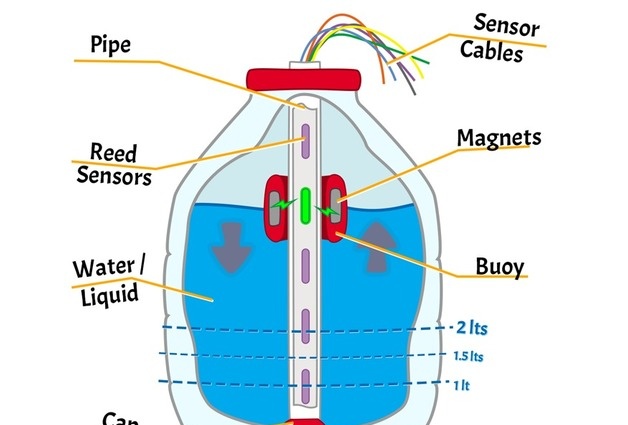
Manufacturing a level indicator on reed switches
You need to make the sensor itself - this is a wire on which reed switches are located at certain distances.
This wire is inserted into a tube, which is sealed from the bottom, and a bundle of wires comes out from the top, connected to the board. Then we put on the magnet float and connect the power. And our level is ready.
In operation it looks like this:
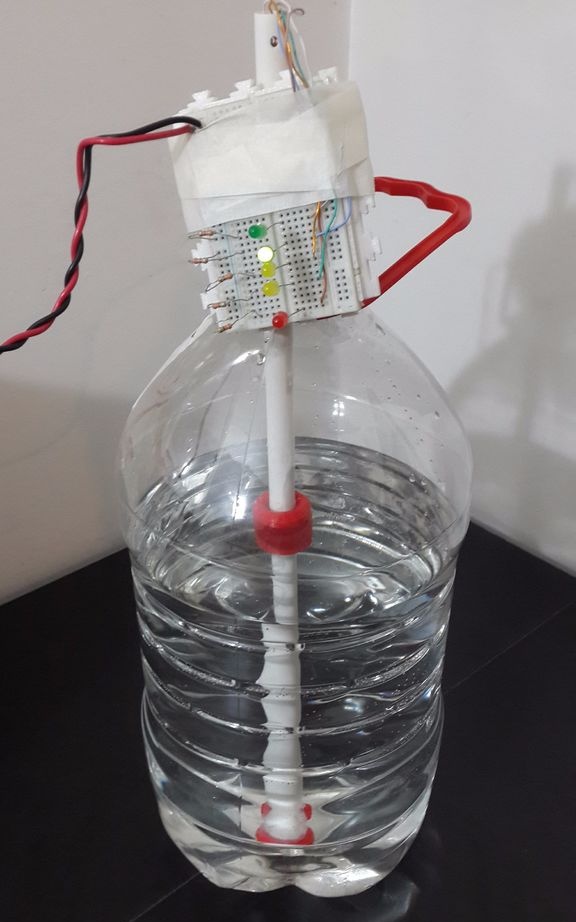
The length of the measuring tube of this sensor can be any other. So is the number of measurement cells.
Another important advantage is that the system is sealed and the voltage does not in any way touch the liquid.
Original article in English
Similar master classes
Particularly interesting

Cable antenna for digital TV in 5 minutes
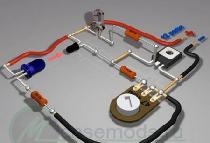
A selection of simple and effective schemes.
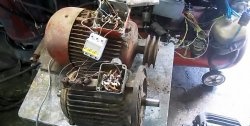
Three-phase voltage from single-phase in 5 minutes
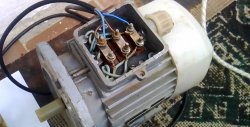
Starting a three-phase motor from a single-phase network without a capacitor

Eternal flashlight without batteries
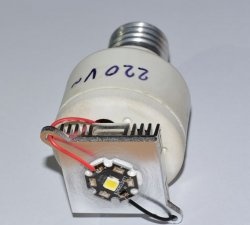
How to make an inexpensive but very powerful LED lamp
Comments (5)

